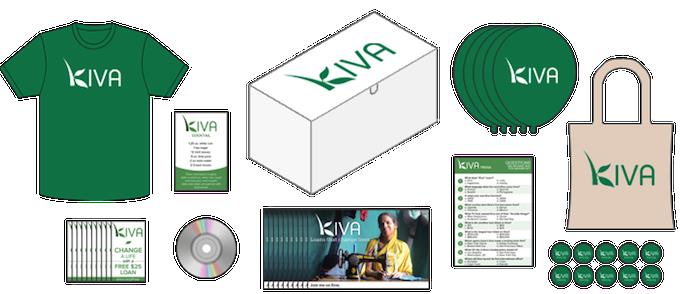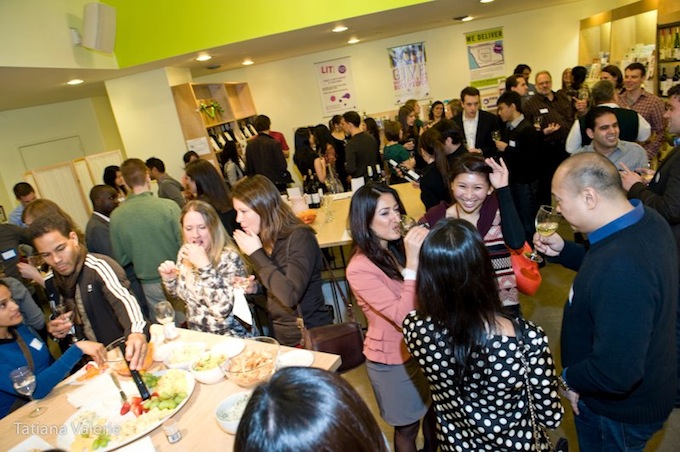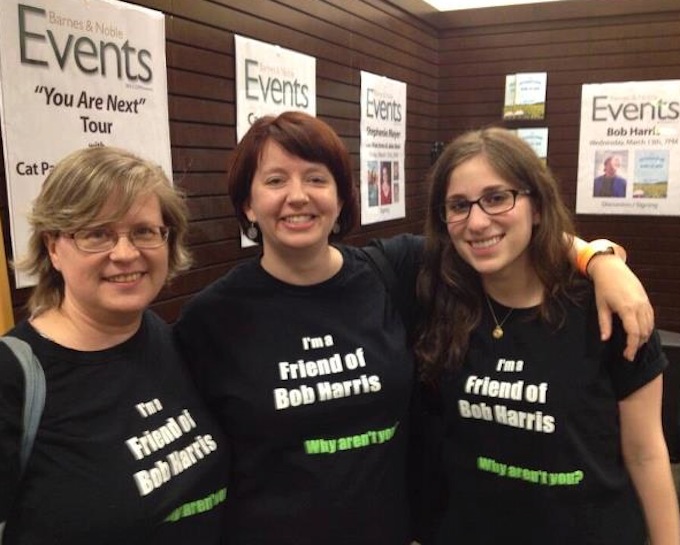What is Your Event Planning Superpower?
- Posted in:
- General
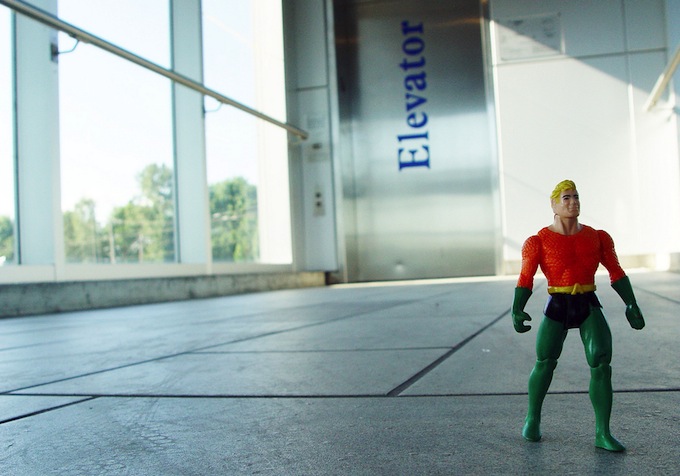
Aquaman scopes out a venue before a big charity event (Photo by: Jason Vanderhill)
Event planning is a tough job. Sometimes it seems that pulling off a successful event requires nothing short of superhuman abilities.
That got us to thinking. While event planners (probably) don't have superpowers, they do have certain skills and abilities which few possess. And since events are complicated affairs, one superpower does not fit all. While one person may have superhuman organizational skills, they may not have superhuman skills when it comes to producing innovative content for an event, and vice versa.
We put our heads together and identified four distinct superpowers that you can develop as an event planner. The quiz below is based on the MBTI personality test, and will help you identify the superpower that you may want to develop.
Superhuman Flexibility and Reflexes

Superpower Description
Legend tells us that before you got into the event planning world you volunteered for secret government experiments, which gave you the incredibility to make flash-quick decisions, often before others can get their heads around a situation. Your ability to live in the moment and adapt to circumstances as they evolve makes you an superstar among event planners.
Your ability to respond to last minute changes helps you keep on top of changes of venue, transportation delays, menu changes, A/V malfunctions and everything in-between. You love engaging with your suppliers, and you do it so well that it's often said that you have the ability to be in more than one place at the same time!
Your Kryptonite
You're at your best when you're making on the spot decisions about issues as they arise. Your focus on the present moment, however, makes it more difficult for you to think long term, and to foster deeper connections with both your clients and vendors.
Notable Event Professionals With this Superpower:
Doreen Ashton Wagner, Greenfield Services; Jenifour Jones, Go Get It Events; Randy Crabtree, Master Story Teller for Meeting Professionals International; Anthony Navarro, Founder at Liven it Up Events;
Super Cybernetic Eyes

Superpower Description
Ever since you installed cybernetic eye implants, your ability to pay attention to all the little details that make an event run smoothly has become second to none. So attuned you are to the small things that matter, that rumors have spread that you can see through walls.
You have a highly analytic mind, which provides a good balance for an industry where many people rely too heavily on their intuition. You are able to determine the success and failure of an event from the metrics that matter--not "vanity metrics" that feel good. You may not think outside of the box very often, but you sure have a good handle on all the things that are going on inside it.
Your Kryptonite
While your cybernetic powers help you keep on top of all the little details that help make an event running smoothly, it does diminish your ability to read the emotions of other people. This can often make you seem cold and insensitive. Also, your dependence on the cold hard facts may make you less open to new ideas that don't have a track record. While you have the power to truly excel in the field of event planning, either develop your people skills or team up with a more intuitive "people-minded" person. Either way, you'll make an unstoppable force.
Notable Event Professionals With this Superpower:
Shawna McKinley, Director of Sustainability at MeetGreen; Michael Vargo, Director of Special Events at Disney; Kyle Hillman, CEO at Kyle Hillman Strategy Group; Jaime Geffen, Co-Owner at YourBASH!; Patrycja Graczyk, Events Executive at Plenta Foods Limited; Heidi Thorne, Promotional Expert at Promo With Purpose; Noelle Provencial, Experiential Marketing and Events at Groupon; Genny Castleberry, Director of Incentive Travel at Spear One;
Mind Reading
 Superpower Description
Superpower DescriptionSome say you were born with your mystical powers to read other people's innermost thoughts and desires, while others claim you developed them over time. Regardless, you have the incredible ability to put yourself in the mindset of clients as well as of event attendees. Not only do you have an incredible creative talent for producing unique events, but you're able to understand attendees in such an intuitive way that it seems you know what attendees will want from an event before even they do.
Your Kryptonite
You have a strong sense of intuition, and although these moments are rare, it can sometimes miss the mark. Your over-reliance on instinct can be a problem when a little fact and data gathering may be the better course. Also, you are a right brainer, which makes it difficult for you to conform to structured schedules and plans. Ideally, you will be the creative force behind an event, while you leave the nuts and bolts to someone more detail oriented.
Notable Event Professionals With this Superpower:
Wayneston Harbeson, VP Operations and Event Services at NATPE; Alicia Schiro, Events and Catering Manager at J Walter Thompson; Kassidy Bird at Uncaged Events; Kadri Soerunurk at Dine in Dark; Donna Kastner, Expo/Sponsor Sales & Activation at Velvet Chainsaw; Aubrey Sendra, event manager at UCLA conference services; Yvonne McNair, Special Events and Marketing at Captivate Marketing Group; Niclole Matthews, event concierge at The Henley Company; Jessica Geiszler, event planner at Stellar J Productions; Julie Robertson, Director of Strategic Accounts at Spear One; Jenny Powers, founder at Running with Heels;
Human Magnetism
 Superpower Description
Superpower DescriptionEver since you were struck by lightning while reading How to Win Friends and Influence People, you have become a human magnet. Rather than attracting metal objects, however, you've developed the remarkable ability to attract people. You're fun to be around and people thoroughly enjoy your company.
Your ability to build strong relationships with clients as well as suppliers make you an invaluable asset to any event planning organization that wants to build its business. Not only that, but since people tend hold you in high esteem, it will generally be easier for you to negotiate with them should problems surface (as they often do).
Your Kryptonite
Your magnetic powers grow the more time you spend with people, especially when that time is spent among like-minded individuals. Your powers diminish, however, when you're assigned tasks that don't involve human interaction. Be sure to maximize opportunities doing the former and minimize the latter.
Notable Event Professionals With this Superpower:
Janis Ross, Executive Director at Eugene Cascades & Coast; Dennis Shiao, Director of Product Marketing at INXPO; Hugh Robertson, CEO at RPM Marketing Agency; Liz Lathan, Event Marketing Director at Dell; Tahira Endean, Director at Cantrav; Liz King, CEO at Liz King Events; Samantha Bowerman, President at Strategic Meetings Group; JoAnn Gregoli at Elegant Occasions; Rudy Garza, VP at Spear One;


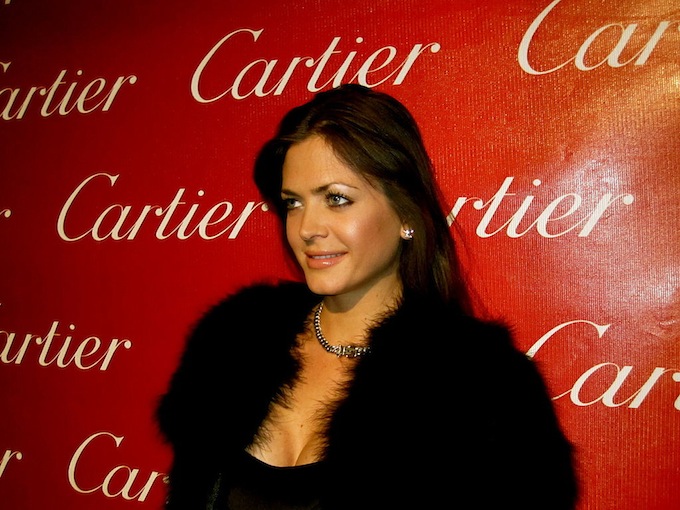
 About Richard DeSantis: Richard DeSantis is a well known producer of quality shows such as the Palm Springs International Awards Gala, Steve Chase Humanitarian Awards, Virginia Waring International Piano Competition, and many others. He is an instructor in the use of lighting for special effect and event management, and has won national awards for his productions. He spent years in Los Angeles, San Francisco, and Washington DC developing his craft.
About Richard DeSantis: Richard DeSantis is a well known producer of quality shows such as the Palm Springs International Awards Gala, Steve Chase Humanitarian Awards, Virginia Waring International Piano Competition, and many others. He is an instructor in the use of lighting for special effect and event management, and has won national awards for his productions. He spent years in Los Angeles, San Francisco, and Washington DC developing his craft.

